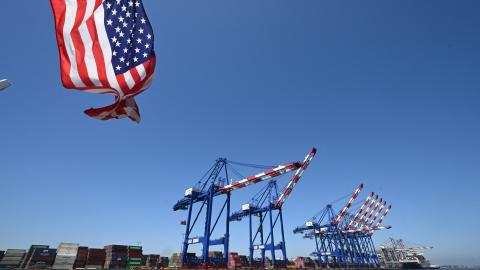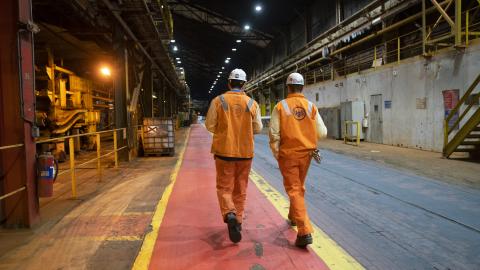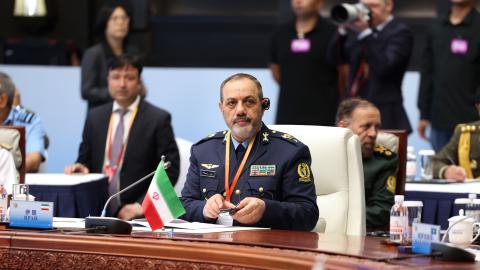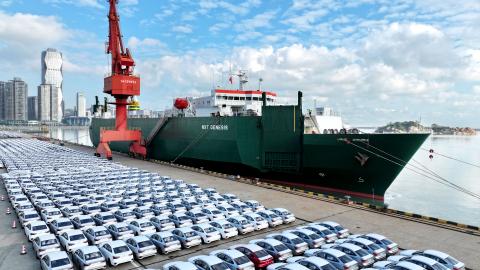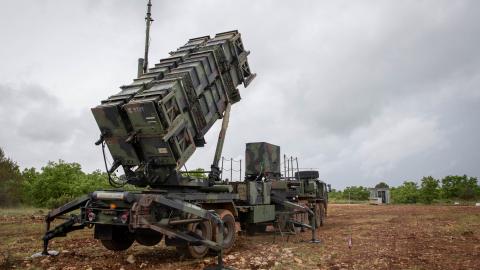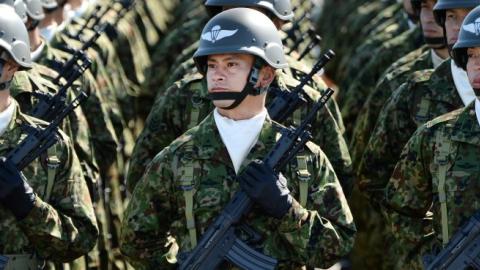On January 5, 2015, in his first press conference of the new year, Japanese Prime Minister Shinzo Abe declared his country’s readiness to pursue a “proactive contribution to peace and stability” throughout the Indo-Pacific region. A phrase he had used a number of times since coming to power for the second time in 2012 (he used it again during his weeklong visit to the United States in April), it was code for Abe’s determination to change the insularity and timidity that has characterized Japanese strategic thinking since the end of World War II. Making the country more “proactive” is a policy Abe cannot push too forcefully. According to domestic polls, the Japanese people support and oppose in more or less equal numbers a more assertive identity for the nation. Such a reinvigorated Japan is also controversial in Tokyo’s strategic neighborhood—welcomed by all major Southeast Asian states, Australia, and India, but condemned harshly by China and North Korea, and viewed with suspicion by South Korea.
In Washington, Abe’s vision for the Japanese future has been well received even though the personal relationship between Abe and President Obama is said to have gotten off to an awkward start. Whatever the actual personal chemistry between the two men, Abe’s vision resonates deeply with Obama’s call for a US “pivot” to Asia. Indeed, a crucial dimension of this plan involves allies accepting a greater share of the security burden in the region.
It is not surprising, then, that Obama and Abe signed the first revision to the US-Japan Defense Guidelines in 18 years during the prime minister’s April visit to Washington. The guidelines confirmed a much more expansive role for the Japan Self-Defense Forces, including the possible provision of Japanese logistical support to the US military not only in Asia but anywhere in the world during peacetime or wartime operations. Such a policy was made possible by the Abe government’s methodical efforts to reinterpret the country’s Constitution to allow for “collective self-defense,” another coded term for widening the avenues that Tokyo can use in rendering military assistance to security allies and partners if Japan itself is not directly threatened. Meanwhile, Abe has also been shepherding domestic legislation through the National Diet to lift restrictions on sales of military technology and hardware to its
friends.
Although Abe has been forced to carefully negotiate the rapids of domestic politics, agreeing to take one step backward in order to take two ahead, his government is deeply committed to reversing Japan’s decline and keeping it as a “tier one strategic player,” as the prime minister once put it. Attaining his ends has at times involved some of the stylized restraint of a kabuki performance since the Chinese (and to a lesser extent the South Koreans) stand ready to seize upon the slightest “proactive” gesture by Tokyo to justify accusations that Japan has become a bellicose power bent on destabilizing the region.
Yet Abe is trying to set a course from which there will be no turning back. His “proactive” turn away from decades of strategic passivity is more about what China has become than about what Japan should be. Although Beijing’s military buildup has gone into overdrive during the last five years, concern over Beijing’s quest for regional hegemony is not a new concern for Abe. As early as 2007, during one of his first major foreign policy speeches in his first turn as prime minister, he told a NATO audience that “there are some uncertainties surrounding China, such as its increasing defense expenditures and continued lack of transparency.” Asserting the primacy of “fundamental values such as freedom, democracy, human rights, and the rule of law,” he affirmed his government’s commitment to “protecting and promoting those values” in the face of Chinese authoritarianism.
In his second incarnation as prime minister, after a few years in the wilderness of Japanese politics, Abe has shown even deeper concern about the challenges China presents to Japan’s immediate interests (especially Japanese-administered territories in the East China Sea). But Abe has increasingly viewed the Chinese not only as a problem for Japan but for the postwar liberal order itself. The cause of these new misgivings is the increase in Chinese aggression in the region’s maritime domains since around 2010.
That China is perceived to be Japan’s major challenge is reflected in the country’s 2013 National Security Strategy-a document which Abe took an active role in drafting, according to officials in Tokyo. It asserts that “the maintenance and protection of international order based on rules and universal values, such as freedom” is fundamental to Japan’s national interest. But these principles have been affected by a “shift in the balance of power” since the beginning of the new century that “has substantially influenced the dynamics of international politics.” Identifying China as the primary factor for changes in the balance of power, the document goes on to declare that “risks that can impede the utilization of and free access to global commons (such as the sea and cyberspace) have been spreading and becoming more serious.” China does not have to be named as the source of these risks, nor as the source of “an increasing number of cases of unilateral actions in an attempt to change the status quo by coercion without paying respect to existing international law.” But this part of the document does highlight “disputes that have arisen over sovereignty between coastal states and China” as being harmful to “the maintenance of law at sea, freedom of navigation, and stability in the region.”
Abe’s explicit desire that Japan use its still considerable weight to “balance” against Beijing and play a significant role in upholding an protecting the existing order goes further than any previous Japanese administration in the postwar period. Until now, Japan has traditionally relied on economic and soft-power diplomacy and eschewed military approaches to problems in its neighborhood. Abe’s determination to go beyond protecting national sovereignty, including Japan’s claims over the Senkaku Islands, and inextricably and explicitly tie Japan’s more “proactive role” to upholding and protecting regional order is several steps further than any contemplated by his postwar predecessors.
For a region understandably obsessed about the implications of China’s new assertiveness—not only in making claims to new maritime domains but in creating facts on the ground by engaging in massive dredging and construction efforts to turn barren atolls into military airstrips— Abe’s policies are sweet music not only to Washington, but also Manila, Singapore, Kuala Lumpur, Jakarta, Hanoi, Canberra, and even
New Delhi.
Despite the emotions and history that will be revisited (particularly by Beijing and Seoul) with respect to past Japanese aggression in a year marking the 70th anniversary of the end of World War II in the Pacific, much of the region also appreciates that a defeated Japan spent many of the postwar decades contributing to the economic rebirth of Asia. This came in the form of aid and generous (if not unrestricted) access to its huge domestic consumption market for Asian exporters. Even today, Japan leads every other Asian country when it comes to foreign aid and foreign direct investment into the region. Japanese subsidiaries and joint ventures with firms throughout the region have become essential to technology and know-how transfer to the low- and middle-income countries of Asia. And while Japan’s domestic consumption market of about $3 trillion is smaller than China’s $3.6 trillion, Japanese consumers spend more and are far more accessible to regional exporters than Chinese counterparts existing in a still largely protected market. In other words, past and ongoing contributions to postwar prosperity mean that most countries in the region value Japan’s role and do not allow wartime memories to spoil relations with Tokyo.
Being “liked” and trusted is a good foundation for an expanding role in the region. But is Japan trying to do too much too soon? The issue that generates the most discussion in Japan (and angst in some quarters) is fear that the country will go beyond providing logistical support for American forces to become involved in a wide array of conflicts. For example, the revised US-Japan Defense Guidelines leaves open the possibility that the Self-Defense Forces may join in an American military action that does not involve a direct attack against Japan if such an action is required to preserve “peace and stability”—a standard some regard as too vague. But Japan can come to the aid of an ally only when all the following conditions are met:
# The situation should pose a clear threat to the Japanese state or could fundamentally threaten the Japanese people’s constitutional right to life, liberty, and the pursuit of happiness;
# There is no other way to repel the attack and protect Japan;
# The use of force is limited to the minimum necessary.
It may be that joining an action, say in the South China Sea against the People’s Liberation Army, fulfills these conditions on the basis that Chinese naval actions in that area threaten territory the Japanese people depend on for their prosperity. But Tokyo could resort to a military role only as part of an American-led effort. Given that all maritime Southeast Asian states accept America as the primary security guarantor in that sub-region and as a check against PLA activities, it is likely any Japanese military contribution under these circumstances would enjoy widespread sub-regional legitimacy and support.
Any provision of direct military support to America in more distant theaters must still fulfill the condition that it threaten Japanese security. And the evidence is that Japanese governments know that it would be domestic political suicide to invoke this provision if the situation were not dire. For example, the Abe government recently concluded that it was not constitutionally possible for Japan to join America and contribute militarily to the fight against the Islamic State in the Middle East even when two of its citizens had been captured and were threatened with execution in January.
It is also true that none of the changes brought about by the Abe government dramatically alters existing restrictions on Japan undertaking unilateral military actions when it is not under direct attack. For Japan’s military to engage unilaterally there would have to be a change to Article 9 of the Constitution, and such change would require majorities in both houses of the legislature and an affirmative public referendum—all of which is highly unlikely in the foreseeable future.
A final obstacle to military “adventurism” is the Japanese people themselves. Multiple surveys and studies across a long period of time, including up to the current period, show that any expansive use of Japanese military assets would be strongly resisted not only by large numbers staunch advocates of the postwar pacifist philosophy but by much of the population. Around half of all Japanese surveyed are opposed even to the fairly modest reinterpretation of the Constitution to allow collective self-defense under the limited conditions mentioned above. These are hardly domestic conditions conducive to the revival of pre-war Japanese militarism, which Abe’s critics charge is his ultimate objective.
But if speculation about Japanese troops appearing in an increasing number of military actions around the region and world is overblown, the future significance of Japan selling arms and military technology to regional states may well be underappreciated. In the National Security Strategy, the Abe government flagged “cooperation on defense equipment and technology” in ways that “fit the new security environment” (i.e., the rise of China and possible challenges to the liberal order). In the subsequent “Three Principles on Transfer of Defense Equipment and Technology” clarification document released by Abe’s cabinet, Tokyo appears to offer a fairly permissive export controls regime for military sales. The second principle states that following a “transparent” and “strict examination” of individual cases, transfers may be allowed if they contribute to the promotion of peace and international cooperation, and if they contribute to Japan’s security. Significantly, the second criterion includes transfers designed to further “joint development and production projects with allies and partners” or “enhance security and defense cooperation with allies and partners.”
Further guidance for these “Three Principles,” released in April 2014 by the National Security Council, stipulates that such transfers must contribute to Japan’s security. The guidelines lists two instances where this would be the case: technology transfers related to joint development and production with countries cooperating with Japan in security areas including the United States, and transfers enhancing security and defense cooperation with countries cooperating with Japan in security matters.
The bottom line is that the transfer of Japanese military equipment and technologies is likely to magnify Japan’s strategic role even without the substantial changes in military capacity Abe is seeking. For example, Australia is currently in discussions with Japan to purchase the latter’s Soryu-class submarines, which are among the best conventional submarines in the world. If the sale goes through, the subs would be fitted with American weapons systems, a development that would further bind the militaries of the allies together through interoperability of hardware and common expertise.
Japanese military equipment and technology may also be sold to like-minded Southeast Asian states that join in the effort to resist China’s expanded territorial claims and maintain both the territorial status quo in the South China Sea and the shape of the regional order more generally. But so far, only a small number of patrol ships have been sold to the Philippines and Indonesia, and will likely be sold to Vietnam in the future.
For the moment, none of these moves is sufficient to alter the military balance in the South China Sea, let alone the Indian Ocean or beyond. Japan’s emergence as a major supplier of military equipment and technology to like-minded countries in Asia is still in an early stage and must overcome domestic resistance (political, bureaucratic, and social) to arms-related sales that has built up during decades of limitations and prohibition. But as Japan moves forward in discussions to export its Soryu-class submarine equipment and technology to Australia, and in similar discussions with France to develop cutting-edge weapons for fighter aircraft, the culture is changing. In fact, Japanese defense firms held their first-ever defense trade show in the port city of Yokohama in May.
China has considerable interest in these developments and clearly understands Japan’s potential to emerge as a counterbalance to the PLA’s military power. As Han Xudong, a senior Chinese military expert with the country’s National Defense University, argues, Japan’s openness to export military equipment and technology to Southeast Asia and Australia “will break the existing political, economic, and military patterns among those countries.” From this author’s conversations, this seems broadly reflective of opinions in the Chinese national security community. As China knows, Japanese military technology is often more than a match for the reverse-engineered Russian hardware (much of it dated) upon which the PLA relies almost exclusively. From the Chinese point of view, Beijing’s plan to strategically and militarily “neutralize” (or perhaps “neuter”) Southeast Asian states is meeting a significant obstacle in this form from Japan. At the same time, Japan’s preparedness to sell military technology to states which have maritime disputes with China will complicate Beijing’s strategic and tactical calculations when the PLA draws up contingency plans for possible conflict with these smaller states, even though these military sales will not be decisive.
At the moment, American and regional encouragement of Abe’s vision of a more “proactive” Japan stems from a rather perfect balance of interests among parties. Japan is gradually contributing to a favorable strategic and military balance for America and its security partners but not doing so much that its actions appear unsettling or threaten its neighbors.
Yet Abe’s promises are far more than just talk. Under his leadership, Japan has demonstrated that the postwar American-led alliance deterrence system can respond effectively to the challenge of China’s rise. This is important to Washington since it is clear that other Southeast Asian states are generally in a strategic holding pattern, hedging against China but not yet willing to join America in balancing against Beijing. They are waiting to see whether a system of alliances and security partnerships with America can be an effective check against China. It is also true that despite its growing size and clout, China still fears diplomatic isolation in the region. Japan’s stores of goodwill, accumulated over the postwar decades, mean that Tokyo’s increased willingness to publicly challenge and condemn Chinese assertiveness will have a ripple effect. In forums that do not involve America, such as the ASEAN+3 (Southeast Asian states plus China, South Korea, and Japan), meetings that are highly valued by China, smaller states that are otherwise highly vulnerable to political and diplomatic coercion from China will increasingly look toward Japan as a leading counterpoint.
Ironically, as the world observes the 70th anniversary of Japan’s defeat in World War II, that country is now regarded as essential to preventing the emergence of another dominant indigenous Asian power with the ability to set the world on fire.
